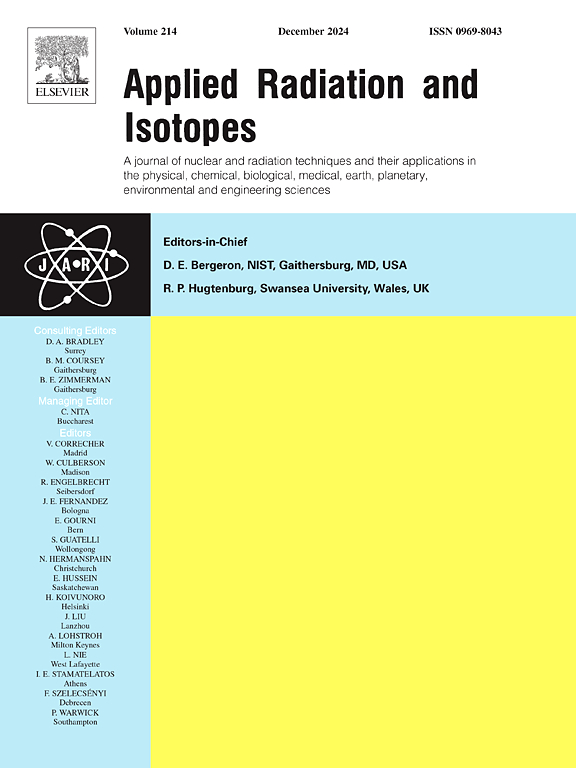来自哈特尔普尔先进气冷反应堆的新鲜木炭样本的伽马光谱测量
IF 1.6
3区 工程技术
Q3 CHEMISTRY, INORGANIC & NUCLEAR
引用次数: 0
摘要
放射性核素从核能反应堆排放到大气中,并经常在国际监测系统(IMS)上进行测量,该系统是《全面禁止核试验条约》(CTBT)监测全球核爆炸迹象的主要工具。在先进气冷堆(AGR)的换料过程中,冷却剂气体经过处理和过滤后排入大气。使用高纯锗γ射线探测器对加工厂的木炭和滤纸样本进行测量,以确定其中存在的放射性核素并计算其放射性活度。确定了主要由裂变(133Xe、135Xe、131mXe、133mXe)和活化(125Xe、127Xe、129mXe)产生的放射性氙同位素,以及 137Cs、60Co 和 75Se。此外,还利用γ-γ巧合测量法对放射性核素进行了识别确认和活度定量,这种方法对低活度放射性核素的测量更为灵敏。本文章由计算机程序翻译,如有差异,请以英文原文为准。
Gamma spectroscopy measurements of fresh charcoal samples from the Hartlepool advanced gas-cooled reactor
Radionuclides are emitted from nuclear power reactors to the atmosphere and are often measured on the International Monitoring System (IMS) – the primary tool of the Comprehensive Nuclear-Test-Ban Treaty (CTBT) for monitoring for signs of nuclear explosions around the world. During refuel of an advanced gas-cooled reactor (AGR) the coolant gas is processed and filtered before being exhausted to the atmosphere. Charcoal and filter paper samples from the processing plant have been measured using high purity germanium γ-ray detectors to identify which radionuclides are present and the activities calculated. Isotopes of radioxenon generated primarily by fission (133Xe, 135Xe, 131mXe, 133mXe) and by activation (125Xe, 127Xe, 129mXe) were identified, as well as 137Cs, 60Co and 75Se. In addition, radionuclide identification confirmation and activity quantification was made using γ-γ coincidence measurement, which provides a more sensitive measurement for low-activity radionuclides.
求助全文
通过发布文献求助,成功后即可免费获取论文全文。
去求助
来源期刊

Applied Radiation and Isotopes
工程技术-核科学技术
CiteScore
3.00
自引率
12.50%
发文量
406
审稿时长
13.5 months
期刊介绍:
Applied Radiation and Isotopes provides a high quality medium for the publication of substantial, original and scientific and technological papers on the development and peaceful application of nuclear, radiation and radionuclide techniques in chemistry, physics, biochemistry, biology, medicine, security, engineering and in the earth, planetary and environmental sciences, all including dosimetry. Nuclear techniques are defined in the broadest sense and both experimental and theoretical papers are welcome. They include the development and use of α- and β-particles, X-rays and γ-rays, neutrons and other nuclear particles and radiations from all sources, including radionuclides, synchrotron sources, cyclotrons and reactors and from the natural environment.
The journal aims to publish papers with significance to an international audience, containing substantial novelty and scientific impact. The Editors reserve the rights to reject, with or without external review, papers that do not meet these criteria.
Papers dealing with radiation processing, i.e., where radiation is used to bring about a biological, chemical or physical change in a material, should be directed to our sister journal Radiation Physics and Chemistry.
 求助内容:
求助内容: 应助结果提醒方式:
应助结果提醒方式:


